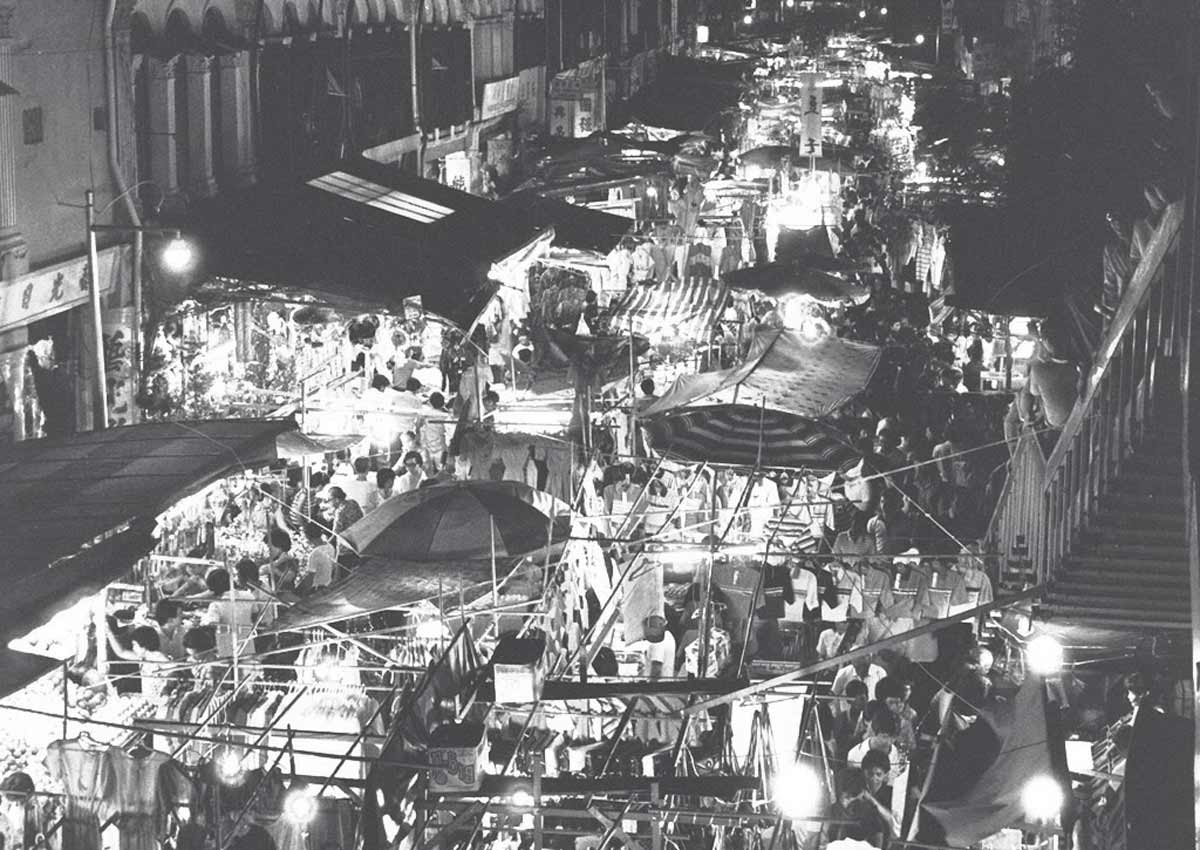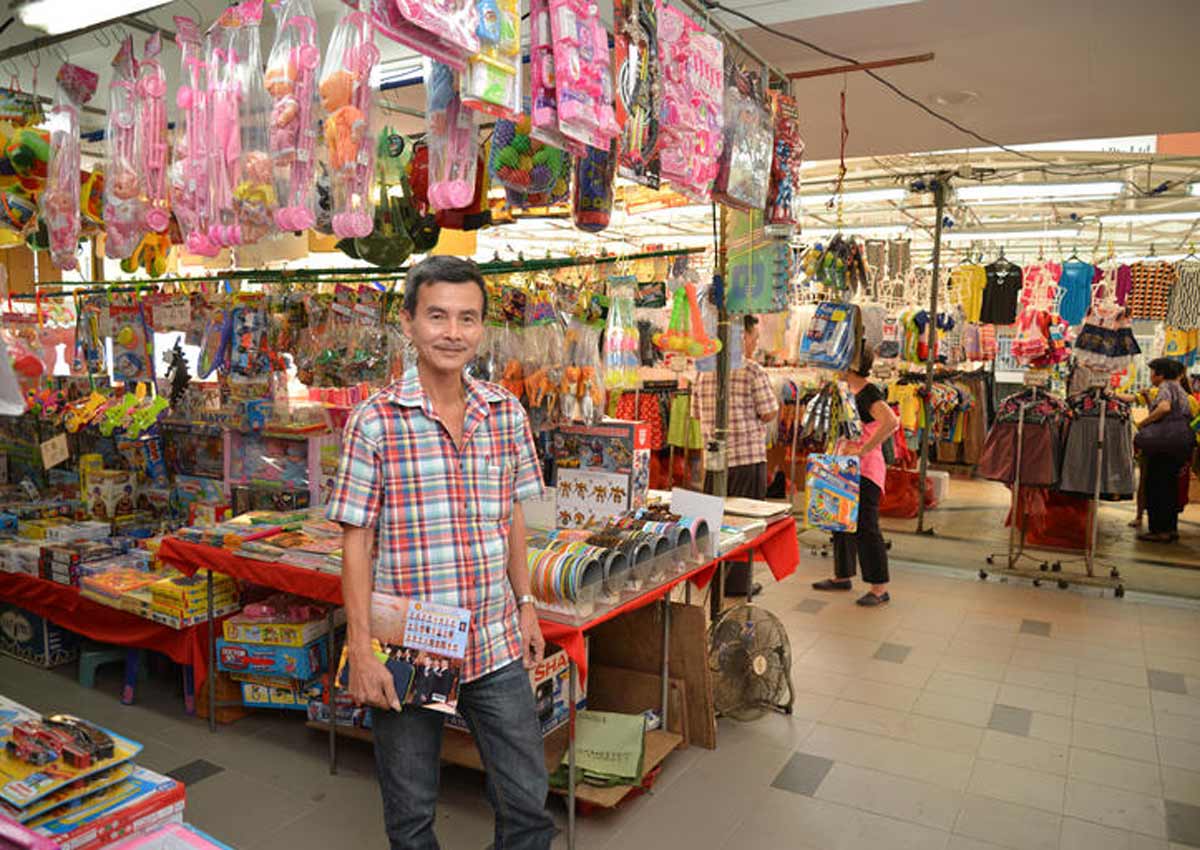Same old, same old is a common quibble about pasar malam, or night markets, here.
This could be one reason why, these days, only 10 to 12 are organised here a month, down from 20 to 30 five years ago, according to the Trade Fair Merchants’ Association of Singapore, comprising 150 pasar malam stall owners and operators.
But the association hopes to turn the industry’s fate around.
Its proposal: A permanent mega night market carnival park with amusement park games and rides, and getai.
The idea is bold and ambitious. But experts wonder if it is economically viable.
After all, as the association’s president Alan Toh detailed in a recent interview with The Sunday Times, the new park will ideally be 150,000 sq m – larger than the size of the Downtown East entertainment hub in Pasir Ris – and within walking distance of an MRT station.

It should also have at least 1,000 stalls – half selling merchandise, half selling food, including local fare such as tutu cake and kacang putih, as well as items from other countries.
There will also be an entrepreneur zone, for newcomers to operate a stall for a month rent-free, as well as 20 amusement park attractions such as a ghost house, carousel, ferris wheel and bumper cars.
This is not all. The plan includes a 200-seat open-air cinema for the screening of old movies, such as those by late Malaysian film icon P. Ramlee. Guests can also relax at a bistro serving local beers. A stage will be set up for shows including getai performances.
The association is drafting an official proposal, but wrote a letter to the Government about two weeks ago to ask it to “allocate the time to discuss” this park.
In the letter, Mr Toh, 60, touted it as “Singapore’s next tourist attraction” and suggested Jurong East – which is along the proposed highspeed rail project linking Kuala Lumpur to Singapore – as an “ideal location”.
Among the park’s aims, he says, is to provide a secure livelihood for stall operators.
The association’s honorary adviser, Member of Parliament Charles Chong, is facilitating the discussions.
The 63-year-old says: “When the association approached me with the idea, I thought it was interesting. Pasar malam are part of our culture and there is value in keeping them alive.”
While he is unsure if the plan is financially viable, he says: “Even if it doesn’t succeed, you can adapt it. Discard what doesn’t work and keep what does.”
The Singapore Tourism Board says it is open to such proposals and will discuss it with the association and other industry stakeholders.
Experts contacted say they are impressed with the detailed plan, but have doubts about its feasibility.
Associate professor of marketing Leonard Lee, 44, from the National University of Singapore Business School, says: “I think it’s a brilliant idea which can help preserve and showcase an important aspect of our unique local heritage, as well as facilitate cultural exchange and social cohesion in Singapore.
“But a feasibility study would be necessary and I think a lot will depend on the implementation of this plan.”
The 300-member Federation of Trade Fair Merchants’ Association, responsible for about 70 per cent of trade fairs here, was less kind.
Describing the plan as unrealistic, its general affairs director Ho Chee Eng, 60, says it may take more than five years to realise such a plan. In a letter to The Straits Times Forum page last week, he adds that is not a timely solution to the problems the industry faces.
Instead, he suggests helping stall owners to transform their businesses, for instance, by consolidating the supply chain to help them cut costs, or through coaching and offering discounted rents to rookie stall owners, especially those who bring in novel products, such as unconventional snacks.
In any case, if the plan for a permanent pasar malam goes ahead, experts suggest learning from successful versions overseas, such as Hong Kong’s Temple Street Night Market and Taiwan’s Shilin Night Market.
Ms Alicia Seah, 51, director of public relations and communications at Dynasty Travel, notes that the Temple Street Night Market has fortune tellers, tarot card readers, Cantonese opera singers and shops selling trendy clothes and accessories as well as local food such as Hong Kong-style claypot rice.
“Nowhere else do you find such a mix of culture, cuisine and entertainment. It is accessible, the goods are affordable and the food delicious.”
Others suggest taking a leaf from successful local fairs and weekend markets, such as the annual Hari Raya Bazaar in Geylang Serai, which is known to attract large crowds.
Dr Michael Chiam, 55, a senior tourism lecturer at Ngee Ann Polytechnic, says: “One possible way is to organise pasar malam based on the local festivals.
“The festive events are successful because they are usually located in areas where there is a high concentration of people who go for the festive mood.”
While the association’s plan calls for a fixed location for the pasar malam, some suggest a mobile one might work better.
Mr Gevin Png, 42, course manager of Temasek Polytechnic’s diploma in hospitality and tourism management, says: “Pasar malam are by nature mobile, with an element of chaos, hence their novelty. A permanent one running throughout the day would contradict the meaning of ‘night market’.”
Assistant professor of marketing Hannah Chang, 35, from Singapore Management University, is quick to point out that pasar malam face strong competition from malls, hawker centres, coffee shops and online shopping.
To survive, the night markets must offer something not found elsewhere.
Prof Lee from NUS suggests having stalls that sell crafts, antiques and artefacts to cater to tourists.
“There could also be rotating attractions, such as bazaars or auctions, to encourage repeat visits.”
A strong and unique theme would be crucial, says Ms Jane Chang, 34, head of marketing communications at Chan Brothers Travel.
“The park would have to select its tenants very carefully to get the right mix to maximise income.”
When presented with these suggestions, Mr Toh tells The Sunday Times that he will consider them.
He says that his association will raise $5 million on its own – through its members and contacts – to fund his plan and hopes the authorities can help make it a reality.
“Pasar malam are an important part of Singapore identity and something my association very much wants to preserve.”

This article was first published on Oct 16, 2016.
Get a copy of The Straits Times or go to straitstimes.com for more stories.






